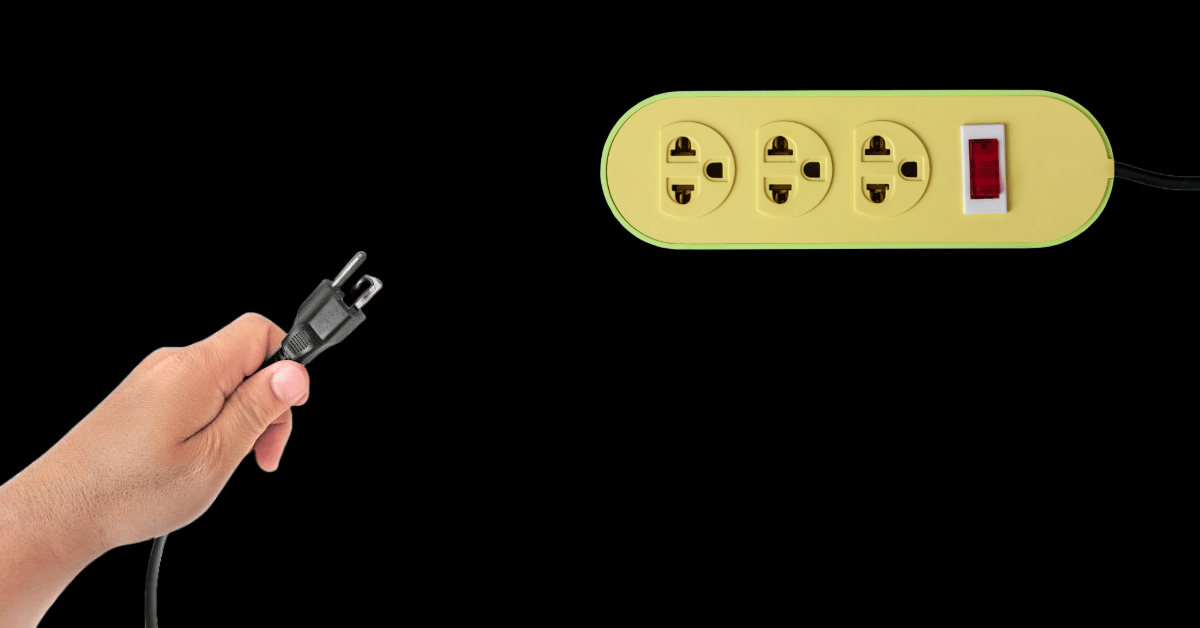
Some celebs seem larger than life…
Then you have the celebs that install a 60-foot blow-up version of themselves in Times Square. Yep, Kim K has appeared as a ginormous inflatable in the middle of NYC. Why? Well, to promote her new swimwear line, of course.
- Charlotte, Editor ♡
WHAT’S HAPPENING IN MARKETING TODAY?
Inflatable Kim K, PrettyLittleThing attempts to save their image & Crayola brings back fan fave colours

What’s a great marketing tactic? A giant 60ft half-naked Kim Kardashian in Times Square.
Yep. That's gonna get some eyes. Last week, the 60-ft rubber inflatable version of the celebrity-turned-corporate-icon appeared in the middle of one of the most famous (and busiest) plots of land on the planet. All in the name of Skims.
Usually, I'd say the idea of having a bikini clad, exposed inflatable woman laying on her side, face covered and ogled over by strangers in the middle of the street would be... questionable. Unsettling, even.
But in this case, the sheer size of the seamless, poreless titan makes giant Kim seem more invincible than damsel in distress. And, to me, it tells a story of a woman who was able to turn her own sexy aesthetic into an aspirational brand (and cultural behemoth).
Question: Do you guys think a "sleek" rebrand makes up for years of ethical controversy, unsustainable practices, oversexualisation of minors and bad business in general?
Well, clothing brand PrettyLittleThing is trying it! The controversial online retailer gained heat over the weekend for the repositioning of the brand as “affordable luxury” with a “unique, accessible appeal". The rebrand includes a wiped feed, reset with a new burgundy colour way and an elegant calligraphic logo. A classy facelift, if you will. Below the logo it says: “Legacy in progress.”
So, let’s take a look at their legacy, shall we? Starting off with exploitation, lying about sustainability practices, more design theft you could ever even imagine, allegations of slavery and unsafe working conditions for their garment workers... The list goes on.
So, is there anything actually different here? There's already 30% off everything online, which isn’t very “timeless classics” of them. The garments are mostly made out of 100% plastic, which isn’t very “elevated essentials” of them. And plus sizes have to pay up to 10% more for garments, which isn’t very “body positive inclusivity” of them. Looks very much the same to me, PLT.
Want to feel old? Crayola has brought back retired colours for the first time in the company's history.
And yes, you’ll likely remember them. “Over the years, the company has received an outpouring of fan requests to bring back some of their retired favorites, especially since Dandelion left the crayon box in 2017.” the website states. “The decision to unretire these eight colors for a limited time will delight and surprise consumers, increase the brand's available color palette and give a nod to the company’s first iconic eight crayon box launched in 1903.”
The returning colours include: Dandelion, Blizzard Blue, Magic Mint, and Mulberry, Orange Red, Violet Blue, Lemon Yellow, and Raw Umber. Thanks Crayola! Now can you please bring back my childlike wonder and the sparkle in my eyes?
Anyway, that's all folks!
-Sophie, Writer
WE’VE GOTTA KNOW…
What was your fav childhood art tool?
DEEP DIVE
The anatomy of a winning pitch deck

Alright, let’s get surgical.
If your pitch deck isn’t landing the funding, the partnership, or the green light you’re after, chances are, it’s suffering from a fatal flaw. It’s bloated. Maybe it’s missing a backbone. Maybe it’s just… lifeless.
But fear not. I’m here, with no medical licence (or gloves, for that matter) to help you crack this thing open and examine the vital organs of a pitch deck that actually works. Ahem scalpel, please.
1. The hook/ the pulse check
If you don’t grab your audience in the first slide, you’ve already lost them. No one cares that you’re “disrupting” an industry—get to the damn pain point. The best decks open with a problem so obvious, so urgent, that investors practically feel it in their bones. Airbnb’s legendary pitch deck stated three clear problems for travellers and hosts alike:
Price is an important concern for customers booking travel online
Hotels leave you disconnected from the city and its culture
No easy way exists to book a room with a local or become a host
Boom. Immediate tension. Your first slide should feel like a defib shock wave rippling through the conference room —waking them up and making them need to know more.
2. The problem/ the broken bone
If your pitch deck doesn’t make your problem look painful, you’re doing it wrong. You’re not just describing an inconvenience—you’re exposing a gaping wound in the market. Why does this problem have to be solved now? Why has no one else done it right? This isn’t the place to be subtle—turn the pain dial all the way up the same way football players do after minor contact.
3. The solution/ the miracle cure
Now that you’ve diagnosed the issue, it’s time to present the cure. But your solution can’t just be good—it has to be unheard of. It needs to be so obvious, so inevitable, that your client thinks, “Why the hell hasn’t this existed before?”
This is where you obliterate competitors like Bhad Bhabie did Alabama Barker. If your solution could be swapped out for a dozen other ideas, it’s not strong enough. Obviously, this is the hard part and needs to exist way before your pitch deck was even a twinkle in your eye.
4. The market/ the blood flow
If there’s no demand, there’s no deal. But throwing a giant “$50B market size” stat on a slide isn’t enough. The best decks don’t just talk about the size of the market—they prove why this is the perfect moment to strike. Uber didn’t say “transportation is huge”—they showed that smartphones were changing everything. Timing is everything, and your deck needs to scream, “This is happening NOW.”
5. The business model/ the heartbeat
No one wants to stare at a dry revenue projection slide. The question on every investor’s mind is: How do you actually make money? Your business model should be so clear and compelling that they immediately see the path to profit. The best decks make revenue streams feel obvious, inevitable, and, most importantly, scalable. We aren’t selling pipe dreams, baby.
6. Traction/ the vital signs
Investors don’t bet on ideas—they bet on momentum. If you’ve got users, show them. If you don’t, show demand signals—waitlists, partnerships, engagement. Even the smallest wins (press features, pre-orders, influencers hyping your product) can signal that this thing has legs. No money, no honey. No pulse? No funding.
7. The team/ the brains behind the operation
Great ideas are everywhere. But great teams are rare. Investors want to know: Why are YOU the ones to pull this off? And no, slapping LinkedIn headshots on a slide isn’t enough. The best decks don’t just list resumes—they tell a story about why this team is uniquely built to win.
8. The ask/ closing the deal
If your pitch deck doesn’t explicitly say what you need, it’s just a TED Talk. Are you raising $2M? Looking for strategic partners? Be clear, be confident, and make it obvious why investing in you is a no-brainer.
So, is your deck ready to operate?
A great pitch deck has to be so much more than pretty slides. It is, instead a well-structured, high-impact argument for why your idea can’t be ignored. If your current deck feels like it’s on life support, it’s time to open it up and make some strategic incisions. Because the only thing worse than a bad pitch deck is one that flatlines on the (conference) table before it even starts.
-Sophie, Writer
TREND PLUG
I absolutely have to

Today's trend comes from reality show Two Ways with Erica Mena, where the internet’s favourite crash-out, Aaron the Plumber, took things way too seriously.
Erica playfully love-tapped him on the face, and instead of letting it slide, he got visibly upset. She hit him with, “Are you really about to ruin this moment?” His now-iconic response? “I absolutely have to.”
The moment was so unnecessary that TikTok ran with it, turning it into a sound for when you just have to do something—good, bad, or downright delusional. Got a mate who's about to get stuff off their chest even though you're on great terms? “I absolutely have to.” That one friend that NEEDS to take pics of everything? “I absolutely have to.” It’s the perfect sound for those little moments of weakness everyone can relate to.
How you can jump on this trend:
Think of something you do, even when you know it's not the best move. Film yourself doing the thing, lipsyncing to the sound. Give context with your OST, and that's it!
A few ideas to get you started:
"Are you really about to send the client five extra logo concepts when they already picked one?" I absolutely have to.
"Are you really about to make a TikTok the second you see a trending sound?" I absolutely have to.
"Are you really about to say ‘looks great!’ even though the client’s requested tweak is hideous?" I absolutely have to.
-Abdel, Social Media Coordinator
FOR THE GROUP CHAT
😂Yap’s funniest home videos: They were NOT all better
❤How wholesome: May this type of love find you & me
😊Soooo satisfying: SpongeBob wood painting
🍝What you should make for dinner tonight: Seafood boil skewers
ASK THE EDITOR

Q - I've been promoting my online course for mums of toddlers on my Instagram but no one is signing up. What should I do? - Esther
Hey Esther!
If you aren't getting sign-ups, I'm going to guess you're coming across a little too salesy in your content OR you don't have good product-market fit. Organic content's for building a relationship with your audience. If they feel like you're constantly trying to sell them something, your audience won't continue to engage. If I were you, I'd pull back on promoting your course. Instead, make your posts around the actual course content. This will draw in people who care about the topics your course covers.
Engage with your audience in the comments to keep building those relationships. In those conversations, you can figure out whether your course content addresses the actual challenges your audience wants help with. This will help you understand whether you need to adjust what you're offering!
- Charlotte, Editor ♡